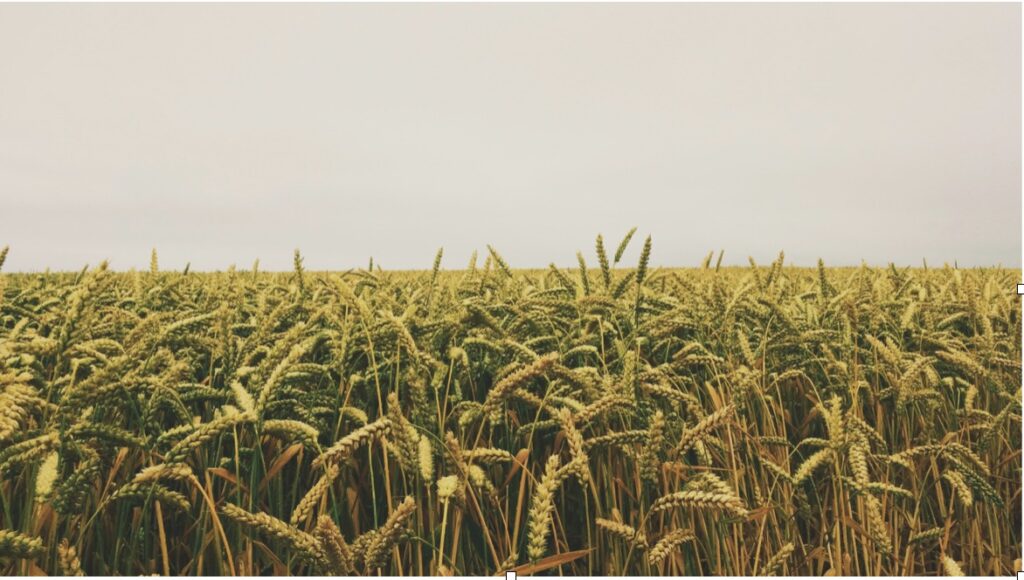Climate change has become a reality that no one can deny. Global warming, rising water levels, groundwater depletion, pollution levels rising, and the list goes on.
Consider sustainable farming as a first step toward this goal. Sustainable farming is a method of growing long-term crops in order to preserve natural systems and reduce environmental impact.The types of crops you grow can have an impact on how sustainable your farming is. Millets are one sort of smart crop that many Indian farmers are now exploring for long-term farming sustainability.

What Makes Millets a Good Choice for the Environment?
1. Millets are small seed-like cereal grasses that thrive in dry and semi-arid environments, making them resistant to low soil fertility and low precipitation.
2. Millets, for example, use far less water than rice, according to comparative research. Millets are a C4 crop, which explains why. C4 crops produce C4 photosynthesis, which lowers water loss.
3. Other crops do not survive for a long time and perish quickly when it comes to food waste. Millets, on the other hand, have a long shelf life and can be consumed after only 3-6 months. Millets are a sustainable option since they reduce waste and can be sold by farmers years after production.
4. Millets are resistant to both dry conditions and pests. Farmers will be able to keep millets for extended periods of time as a result of this.
Gluten sensitivity can manifest itself in a variety of ways outside of the digestive system, including the following:
The Millet Advantage :
1. Millets are small-seeded grasses that are hardy and grow well as rain-fed crops in dry zones with little soil fertility and moisture. Millets include Sorghum, Pearl Millet, Finger Millet, Barnyard Millet, Foxtail Millet, Kodo Millet, Proso Millet, and Little Millet. They are likely the first cereal grain to be used for domestic uses. Millets grow well in dry places as rain-fed crops, unlike rice and wheat, which require a lot of fertiliser and water. They are easy to digest, highly nutritious, non-glutinous, and high in fibre.
2. According to agronomics, the recovery of millet agriculture in Karnataka, Andhra Pradesh, and Telengana is a step toward sustainable cropping techniques that preserve biodiversity in nature. Millets are more sustainable as crops due to a number of characteristics. When comparing the amount of water required to cultivate rice and millets, this is demonstrated. According to the Crops Research Institute for the Semi-Arid Tropics (ICRISAT), a global research organisation promoting millets, a single rice plant takes approximately 2.5 times the quantity of water as a single millet plant of most kinds.
3. Farmers in northern and southern Karnataka used to plant small millet as a mixed crop with groundnut and other crops during the Kharif (April to October) season, and it was consumed on a daily basis in Haveri, Dharwad, Gadag, Bagalkot, and other places. Millet was previously the major meal in the Mandya, Dharwad, and Tumakuru regions, but it was supplanted by rice and wheat in the last three to four decades, according to elderly farmers.
Farmers stopped producing it as it gained a reputation as a poor man’s food, and the government’s public distribution system, which supplies low-cost grains to the poor, played a crucial part in keeping nutritionally rich millet off people’s plates.
Millets are referred to be “smart crops” since they provide both nutritional and sustainability benefits. So, the next time you go to the shop, grab a millet snack box and make a sustainable option.
HOW CAN MILLETS BE INCLUDED IN YOUR DAILY DIET?
There’s no reason to give up your favourite foods. Simply replace one or two of the items with millets, and you’ll have a delicious, well-balanced, and nutritious meal. Here are some examples of what you can do:
- Instead of rice, try millets: Simply swap out one meal of rice for millet and notice the difference. To begin, try a millet and rice mixture that is half and half.
- Do you know how to make dosa batter at home? Instead of rice, try millets. Alternatively, use a half-and-half millet and rice mixture.
- Use more vegetables and millet instead of rice for a healthier pulau.
- Make millet payasam with palm sugar or jaggery for a sweet treat
- Instead of oats, try millet for breakfast. Cook and serve with raisins, brown sugar, or nuts as a garnish
- Make a vegetarian “burger” by combining with cooked beans or peas. Season to taste, form into patties, and bake or pan-fry.

Assist in the development of sustainable agriculture
What is beneficial to you is beneficial to the earth as well.Millets are environmentally beneficial, and eating them encourages farmers in dry and semi-arid areas to plant crops that are best suited to those environments.Many farmers, interestingly, use ‘akkadi,’ a mixed cropping method that boosts on-farm biodiversity and sustainability. This strategy boosts farm productivity by boosting soil fertility and making plants stronger, allowing them to battle pests and illnesses more effectively.
Try Millesbury for amazing millet based snacking which are highly nutritious and are a power pack which can boost your immunity and promote millet in India. For more information visit www.millesbury.com

